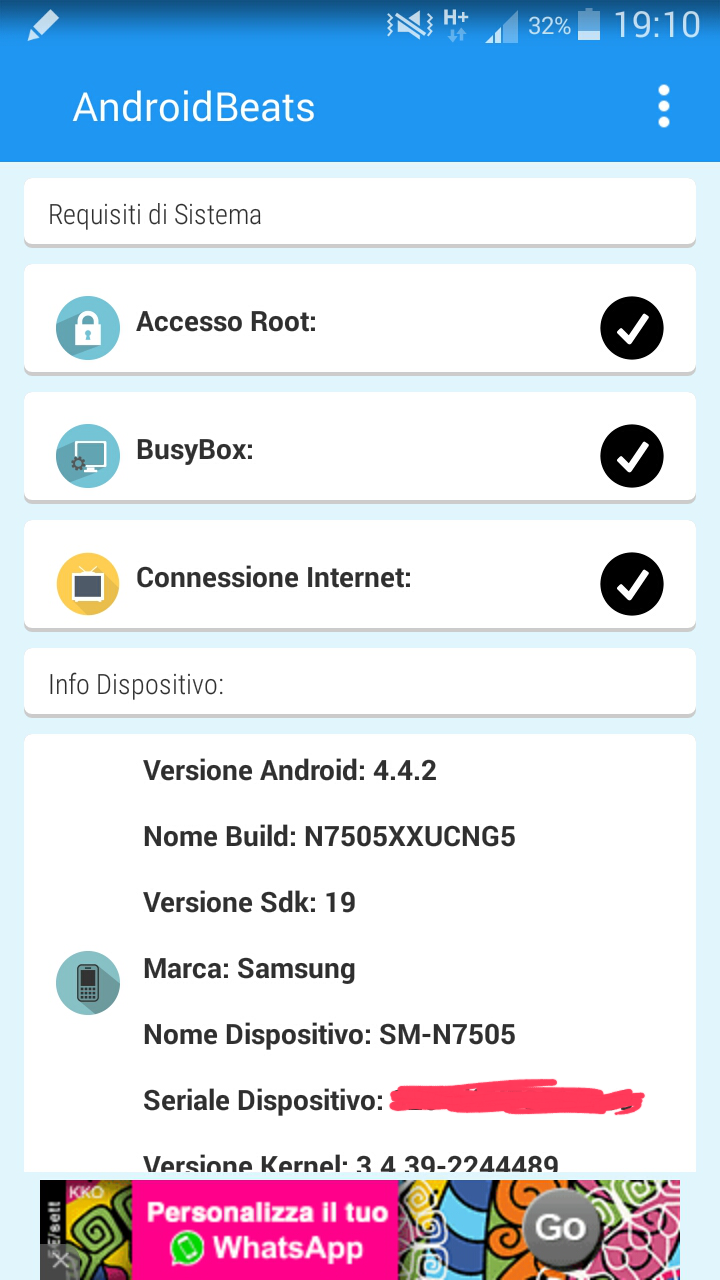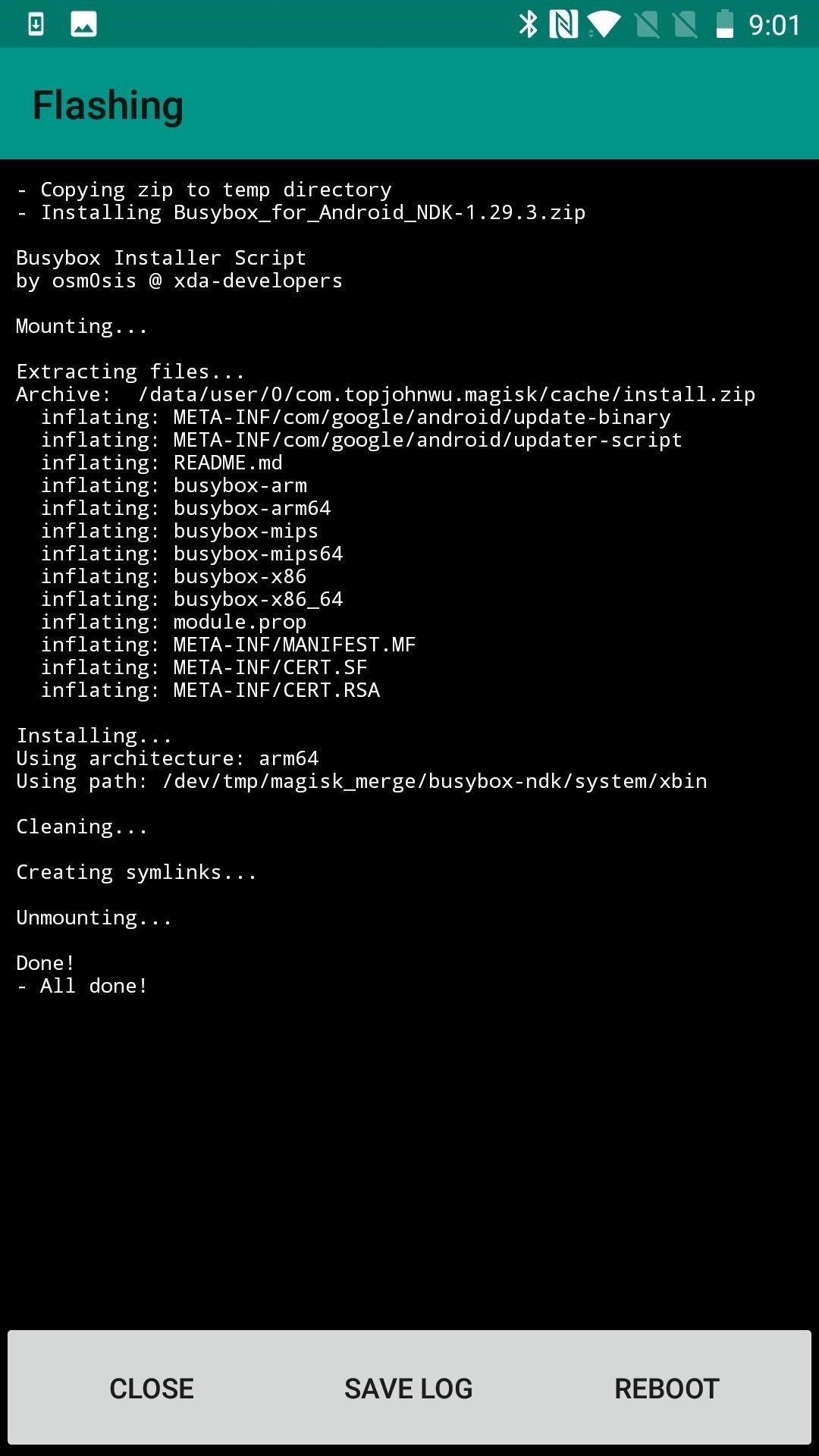
- #BUSYBOX FOR ANDROID BINARY HOW TO#
- #BUSYBOX FOR ANDROID BINARY INSTALL#
- #BUSYBOX FOR ANDROID BINARY SERIAL#
- #BUSYBOX FOR ANDROID BINARY SOFTWARE#
To teach this barebones build of Linux some new tricks, used the mount command to find a partition on the system that actually had write-access, and used that to stash a pre-compiled build of BusyBox for MIPS. Replacing the firmware entirely would of course be ideal, but unfortunately OpenWRT has dropped support for the newer hardware revisions of the TL-WR841N.

It wasn’t a huge surprise to find the kernel was ancient (version 2.6.36, from 2010) and that the system utilities had been stripped to the absolute bare minimum to save space. Once two-way communication was established, proper poking around inside the router’s Linux operating system could begin. Some troubleshooting and an oscilloscope later, the culprit was found to be a 1kΩ pull down resistor connected to the RX line that was keeping the voltage from peaking high enough to be recognized. Finding the UART pads on the PCB and wiring up a level shifter was no problem, but found it was only working one-way.
#BUSYBOX FOR ANDROID BINARY SERIAL#
The story starts, as so many before it have, with a serial port. This work was initially done to help test out reported vulnerabilities in the router’s firmware, but we’re sure the readers of Hackaday can come up with all sorts of potential uses for this information.
#BUSYBOX FOR ANDROID BINARY HOW TO#
Now, thanks to of the Zero Day Initiative, we now have a concise step-by-step guide on how to hack your way into the newer versions of the hardware and take full control over this bargain WiFi device. The TP-Link TL-WR841N isn’t a particularly impressive piece of hardware, but since it works decently well and sells for under $20 USD, it’s one of the most popular consumer routers on Amazon.

#BUSYBOX FOR ANDROID BINARY SOFTWARE#
Posted in Linux Hacks, Software Development Tagged 3.5" floppy disk, 486, busybox, Embedded Linux, floppy disk, linux
#BUSYBOX FOR ANDROID BINARY INSTALL#
It’s good for more than just bragging rights learning how all the components of a minimal install like this fits together will no doubt come in handy the next time you find yourself poking around inside an embedded Linux device.

Even if you don’t own a floppy drive, it’s well worth following his guide and booting the image up in QEMU just to say you’ve officially built a Linux system from scratch. He walks you though the entire process, down to the commands he used to do everything from pull down and compile the source code to creating the final disk image. If you’re wondering how pulled it off, you don’t have to. But then, that was sort of the goal to begin with. had to be very selective about which programs actually made the cut as well, so once the system is booted, there’s not a whole lot you can do with it outside of writing some shell scripts. The kernel is stripped down the absolute minimum, and is targeted for the decidedly poky i486. Of course some concessions had to made in order cram the latest Linux kernel and build of BusyBox into slightly north of 1 MB, so Floppinux certainly isn’t what anyone would call a daily driver.

Every component of Floppinux is pulled directly from the cutting edge, including version 5.13.0-rc2 of the Linux kernel which is literally just a few days old. But most impressively, the project doesn’t rely on ancient software releases like so many other embedded systems do. There’s even a few hundred KB left over on the disk, allowing the user to tuck a few of their own programs and scripts onboard before booting it up. Well that’s what we thought, anyway.īut then dropped Floppinux, a live Linux OS that boots from just a single floppy. Even if you still had a working 3.5 inch drive, surely the size of the modern kernel alone would far exceed the 1.44 MB capacity of the disks, to say nothing of all the support software required to create a usable operating system. There was a time when booting Linux from a floppy disk was the norm, but of course, those days are long gone.


 0 kommentar(er)
0 kommentar(er)
